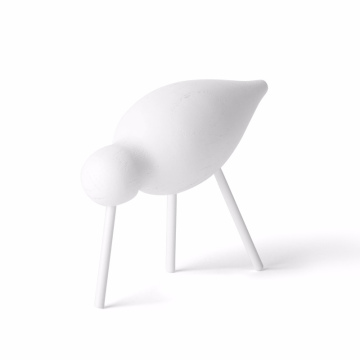Exploring Edinburgh: A Journey Through Architectural and Cultural Beauty
A Historical Overview of Edinburgh
Edinburgh's history is deeply intertwined with its architectural and cultural development, beginning in the early medieval period. Founded upon the volcanic rock of Castle Rock, the city’s origins can be traced back to the 7th century, when it was known as a fortification for various tribes. The establishment of Edinburgh as a significant settlement occurred in the 12th century when King David I bestowed the city with royal status, further promoting its growth.
Throughout the Middle Ages, Edinburgh expanded significantly, becoming a hub of commerce and governance. This period marked the construction of essential structures, including St. Giles' Cathedral, which remains a pivotal emblem of Scotland's ecclesiastical architecture. The tumultuous events of the Wars of Scottish Independence in the late 13th century, featuring key historical figures such as William Wallace and Robert the Bruce, emphasized Edinburgh's strategic importance as a political center.
The Renaissance era heralded a flourishing of culture and architecture in Edinburgh. The university, founded in 1582, became a cornerstone of intellectual advancement, contributing prominently to the Scottish Enlightenment. This period witnessed the construction of iconic buildings such as the Palace of Holyroodhouse and the Old College of the University of Edinburgh, which reflected the artistic and educational aspirations of the city’s residents.
In the 18th century, the city saw the design of the New Town, a major architectural expansion that characterized the Georgian style. Prominent architects, including Robert Adam and James Craig, played pivotal roles in shaping this segment of the city. The establishment of Edinburgh as the capital of Scotland in 1455 further solidified its significance in the nation’s history.
As a result of these historical events and transformations, Edinburgh stands today as a picturesque fusion of medieval and modern architecture, showcasing the rich cultural tapestry that has developed over centuries. The city continues to be a vital part of Scotland's identity, drawing visitors to explore its historical narratives and architectural marvels.
Architectural Marvels: Landmarks and Structures
Edinburgh, the capital of Scotland, is renowned for its rich tapestry of architectural marvels that reflect its historical significance and cultural depth. One prominent structure is the Edinburgh Castle, perched atop Castle Rock. This formidable fortress dates back to the 12th century and has witnessed pivotal moments in Scottish history. Its imposing medieval architecture, characterized by battlements and towers, serves as a prominent symbol of national identity.
Another noteworthy landmark is the Palace of Holyroodhouse, the official residence of the monarch in Scotland. This splendid palace combines elements of Gothic and Renaissance architecture, evident in its intricately designed façade and elegant interiors. The historical significance of Holyroodhouse is profound, as it has been associated with several Scottish royals, including Mary, Queen of Scots. The surrounding gardens, also designed in a modern context, enhance the palace's aesthetic appeal and serve as a peaceful retreat amidst the bustling city.
Moving towards the heart of Edinburgh, the Scott Monument stands as a tribute to Sir Walter Scott, a celebrated Scottish author. Designed in the Gothic style, this towering spire reaches a height of over 200 feet and features intricate carvings of literary figures. The monument not only commemorates Scott's contributions to literature but also showcases the city's commitment to preserving its unique architectural heritage.
Edinburgh's skyline is further embellished with a variety of architectural styles, from the classical Georgian structures of the New Town to modern interpretations seen in recent developments. The integration of these diverse styles illustrates the city's ability to honor its past while embracing innovation. As visitors explore Edinburgh, they will undoubtedly appreciate the architectural diversity that shapes its identity and cityscape.
Cultural Experiences: Festivals, Museums, and More
Edinburgh, a city steeped in history and creativity, serves as a cultural hub that attracts visitors from around the globe. One of the cornerstones of its vibrant cultural scene is the illustrious Edinburgh Festival Fringe. Annually held in August, this festival is the largest arts festival in the world, featuring a plethora of performances ranging from theatre and comedy to music and dance. Its open-access policy allows anyone to participate, resulting in diverse expressions of creativity that reflect the city's eclectic spirit. The sheer scale and variety ensure that there is something for everyone, making it an essential experience for anyone visiting Edinburgh.
The Edinburgh International Festival, which coincides with the Fringe, elevates the city's cultural offerings by showcasing high-quality performances from some of the world's leading artists. Founded in 1947, the International Festival focuses on classical music, opera, ballet, and theatre, complementing the more avant-garde offerings of the Fringe. Together, these festivals exemplify Edinburgh's rich cultural tapestry and contribute significantly to its identity as a beacon of the arts.
In addition to these festivals, Edinburgh is home to numerous world-renowned museums and galleries that further enrich the cultural landscape. The National Museum of Scotland offers visitors a comprehensive journey through the country's history, showcasing everything from ancient artifacts to contemporary art. It serves as a vital resource for understanding Scotland's past and present. Similarly, the Scottish National Gallery houses an impressive collection of fine art, featuring paintings by renowned masters such as Van Gogh and Turner. Both institutions provide invaluable insights into Scotland's artistic heritage, enhancing the visitor's experience of Edinburgh.
The combination of vibrant festivals and esteemed cultural institutions truly encapsulates the essence of Edinburgh. By engaging with these cultural experiences, visitors gain a deeper understanding of the city’s identity and its significant position in the global cultural landscape.
Practical Tips for Visiting Edinburgh
When planning a visit to Edinburgh, timing can greatly enhance your experience. The city showcases its full charm from late spring through early autumn, with festivals like the Edinburgh Festival Fringe occurring in August. However, if you prefer lighter crowds, consider visiting during the shoulder seasons of spring and autumn when the weather is still pleasant. Each season offers unique experiences, from the blooming gardens in spring to the stunning autumn foliage.
For those looking to explore Edinburgh's architectural wonders and rich history, several must-see attractions should top your list. The iconic Edinburgh Castle, perched atop Castle Rock, offers breathtaking views and a glimpse into Scotland's regal history. Don’t miss out on the royal mile, a picturesque street leading to the castle, where you'll find quaint shops and eateries. Additionally, Arthur's Seat, an ancient volcano, presents not only a physical challenge but also a rewarding panoramic view of the city.
Sampling local cuisine is essential for a complete visit. Traditional dishes such as haggis, neeps, and tatties make for a hearty meal. While in the city, consider exploring local pubs and restaurants, which often serve seasonal and locally sourced ingredients. A visit to Edinburgh would be incomplete without trying a glass of Scotch whisky, either at a distillery or a local bar that specializes in this renowned spirit.
Navigating the city is made easy through its efficient public transport system. Lothian Buses provides an extensive network covering most areas of interest, while trams serve key destinations. Visitors should consider purchasing a day pass for unlimited travel, thus enabling convenient transportation. Furthermore, engaging in guided tours can facilitate deeper insights into the city's culture and history. Joining local events, such as Scottish music nights, can provide an authentic cultural immersion, allowing you to connect with both the heritage and the community of Edinburgh.





